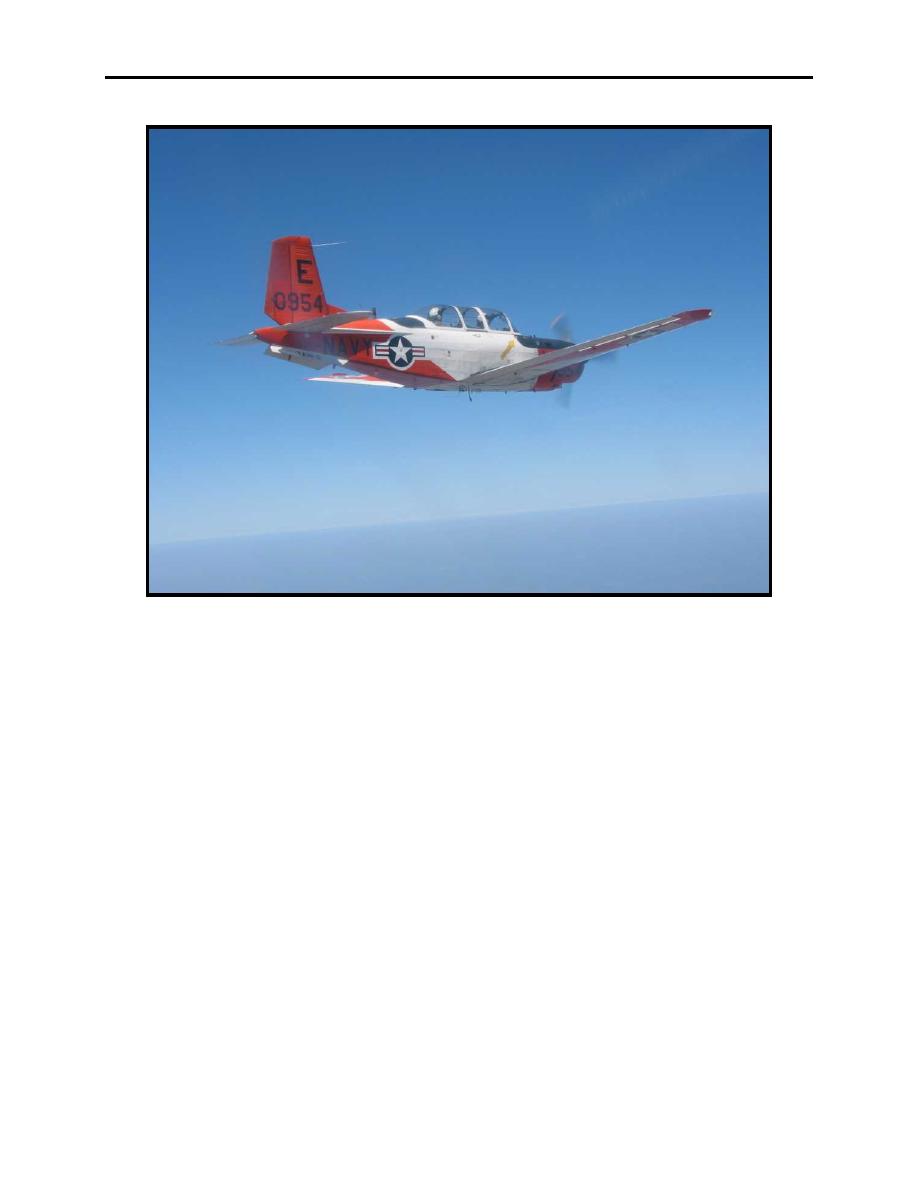 |
|||
|
|
|||
|
Page Title:
Figure 3-4 The Starboard Parade Position |
|
||
| ||||||||||
|
|  CHAPTER THREE
T-34C PRIMARY FORMATION FLIGHT TRAINING
Figure 3-4 The Starboard Parade Position
305. RELATIVE MOTION
Essentially, formation flying is nothing more than controlling the relative motion between
aircraft. To maintain a fixed position (the parade position for example), the Wingman's goal is to
stop all relative motion between aircraft. In order for Wing to do this, he must consider Lead as
fixed in space and any movement between aircraft is considered as movement of the Wingman in
relation to the Leader. To maintain parade position, the Wingman must correct for relative
motion between aircraft with smooth, timely control inputs. Wing must learn to judge bearing,
distance, and relative motion to anticipate the control inputs required and avoid fixating on any
one particular part of the Lead's aircraft. Scan Lead's entire aircraft, don't just use the
ventral point, prop arc, and exhaust stacks.
Relative motion can be resolved into movement about any one or a combination of all three axes.
Primarily, elevator controls vertical movement, power controls fore and aft movement, and
aileron controls lateral movement. When flying in the perfect parade position, the Wing aircraft
will maintain a 45 bearing from Lead (Figure 3-5).
3-8 SECTION PARADE
|
|
Privacy Statement - Press Release - Copyright Information. - Contact Us |